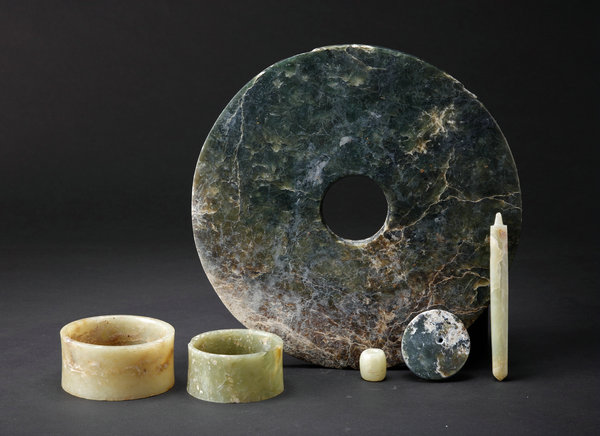
Artifacts unearthed from the Jiangzhuang relic sites of Jiangsu province (Photo provided to China Daily)
Liangzhu hydraulic project site, Hangzhou, Zhejiang province
Researchers attribute the disappearance of the Neolithic Liangzhu culture, which dates back about 5,000 years in the Yangtze River delta, to environmental changes such as floods.
The discovery of a hydraulic project at a site in Yuhang district, on the northern outskirts of Hangzhou, shows that people at the time were adept at building city-states and protecting them from rising waters.
The project, which is believed to be one of the earliest of its kind in China, comprises 11 dams that protected Liangzhu's ancient cities from summer floods. Also, they formed water reserves that served as transportation channels.
Yan Wenming, a professor of archaeology at Peking University, says the hydraulic project is one of the surprising finds of their excavations.
He adds that the project was built before the time of Da Yu, the founder of the Xia Dynasty (c. 21th century-16th century BC), and it implies that the story of Da Yu's flood-control system may not be groundless even though it lacks archaeological evidence.
Jiangzhuang relic sites of Liangzhu culture, Jiangsu province
Another find relating to Liangzhu culture on this year's list is a settlement, which includes more than 280 graves, eight building foundations and other relics.
The finds follow four years of excavations at the border straddling the cities of Xinghua and Dongtai in Jiangsu.
The discovery shows the culture extended to the northern bank of the Yangtze River.
The tombs are arranged according to a highly stratified social structure, and contain burial objects such as pottery and jade.
Most tombs also contain well preserved human bones, giving archaeologists a better chance to understand the burial customs, interpersonal relations and other aspects of life of the Liangzhu people.


















































